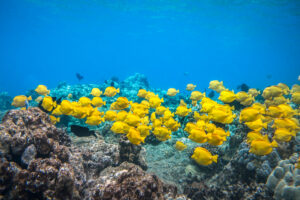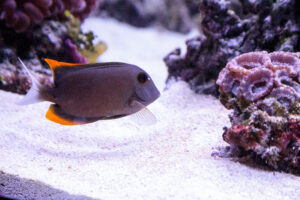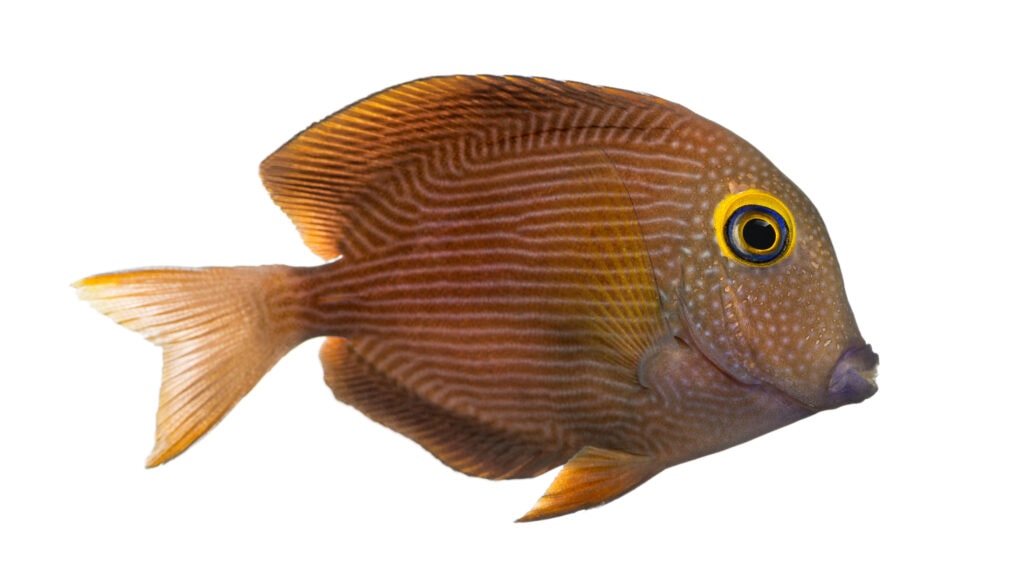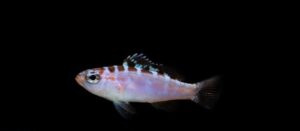Tangs are very common in larger aquariums because of their constant movement along with their stunning color. That being said, no tang is considered easy to keep. All tangs require a different diet than most fish (mainly herbivorous) and can be quite shy and timid when first added to the aquarium. Also, they require lots of room. I usually recommend at least a 60-gallon aquarium for any type –preferably larger. However, there are some tangs that will require a 100-150 gallon tank from the very start. This is due to the fact that they need lots of swimming space as they spend their entire days darting all around the tank zooming throughout the rock structure.
 Most tangs have the same general requirements with the only big differences being size and temperament. Depending on the type you decide to get, you may want it to be the last fish you add to your aquarium. This especially will be the case if you choose to add a fairly aggressive tang; adding it last will put it at the bottom of the pecking order from the start making it less likely to have constant aggression.
Most tangs have the same general requirements with the only big differences being size and temperament. Depending on the type you decide to get, you may want it to be the last fish you add to your aquarium. This especially will be the case if you choose to add a fairly aggressive tang; adding it last will put it at the bottom of the pecking order from the start making it less likely to have constant aggression.
Whichever tang you decide to bring home, always make sure you are able to properly care for it and never impulse buy a tang that you’re not ready for. You always want to insure that your tank is properly cycled and prepped . They are definitely not the first fish you’ll want to add to any tank as they can be sensitive to new aquariums. Do your research because there are certain types that can get well over a foot long! Ask questions and educate yourself on your fish so you can give them the best quality of life.
Yellow
The first tang I’m going to recommend for beginners is the well-known yellow tang. They can reach up to 8 inches. If you plan on keeping this fish until adulthood, it will eventually need at least an 80 gallon aquarium. Yellow tangs can be shy when first added to the aquarium but will quickly become the dominant fish in your tank. They are docile towards other fish but if you add another yellow fish or another with the same body shape, there can be issues.
Yellow tangs require fresh seaweed daily along with daily feedings of brine shrimp or mysis shrimp. Underfed tangs (especially these guys) often have a sunken belly.
Kole Tangs
This next tang is on this list the yellow eye Kole tang. Kole tangs usually reach around 6-7 inches. I would recommend a minimum of a 50-gallon aquarium (preferably larger) for them as they still need an adequate amount of swim space. Kole tangs have a fairly docile demeanor and will be shy when first added to the aquarium. They are well-known for constantly grazing for algae in the aquarium and will help keep algae controlled. They are considered herbivores, so ensuring they aren’t consuming much meaty food will offer them prime health. It is nearly impossible to prevent them from eating meat as most of your other fish in the aquarium will require it in their diet; it is okay for the Kole tang to consume some as long as the majority of their diet is some form of algae.
Scopas
Scopas tangs arguably are one of the most underrated tangs. Their coloration starts off as yellow in the face and fades into completely brown at the tail. They have the same body shape as a yellow tang and are usually overlooked over due to their lack of bright coloration.
Scopas tangs reach up to 8 inches and need at least an 80-gallon aquarium. They are much like yellow tangs in the fact that they require an adequate amount of swim space. If placed in a small aquarium they will be very shy and timid and you won’t be able to experience their bright personalities. Scopas tangs can have a bit of attitude with fish with similar body shape or coloration so it is best to observe them closely when they are first added to ensure they will get along with everyone.
Another great quality of these guys is that they are also well-known for spending their days grazing for filamentous and film algae along with the rock structure. As I’ve said with all of the previous tangs, they require daily feedings of fresh seaweed. They will also eat the food you feed your other fish which is acceptable as long as they still have their daily algae intake.
Tomini Tangs
 The Tomini is going to be the smallest fish on this list reaching a maximum of 6 inches. They stay small and they also have a mild temperament. They have a brown body with bright orange dorsal and anal fins along with a white tail. Due to their relatively small size, you can get away with a minimum of a 50-gallon aquarium.
The Tomini is going to be the smallest fish on this list reaching a maximum of 6 inches. They stay small and they also have a mild temperament. They have a brown body with bright orange dorsal and anal fins along with a white tail. Due to their relatively small size, you can get away with a minimum of a 50-gallon aquarium.
Much like the Scopas and Kole Tang, they also are known for grazing around the tank for algae all day and will need daily feedings of fresh seaweed. You only want to have one tomini in your tank as they can be very territorial towards their own kind. They may show aggression towards other fish with similar colors but (usually) will eventually leave the other fish alone.






Jim Metz says
Fantastic read. Look forward to more. Thank You